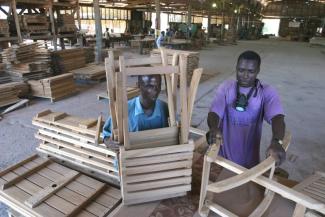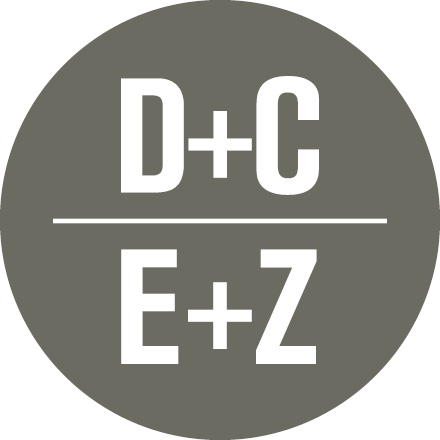Aid effectiveness
Modest impact

The AfT initiative was launched at the WTO Ministerial Conference in Hong Kong in 2005 to help overcome the supply-side and trade-related infrastructure constraints of developing countries and support their integration into international trade (OECD/WTO 2011). Since then, donors disbursed $ 265 billion in official development assistance (ODA) – plus another $ 190 billion in other, non-aid official flows – for financing trade-related programmes in developing countries (OECD/WTO 2015). The most relevant aid categories for these programmes – aid for economic infrastructure and aid in productive sectors – existed already prior to 2005, but donors have pledged to commit additional funds since then.
The AfT initiative is praised routinely as an unmitigated success by the organisations in charge. According to the latest AfT report of 2015, “in particular the case studies that beneficiaries submitted [show] that these programmes have improved trade performance, generated employment, including for female workers, and attracted further domestic and foreign investment” (OECD/WTO 2015). This is in contrast to the academic literature. Earlier theoretical as well as empirical studies offer an ambiguous picture of the effectiveness of foreign aid in strengthening the export capacity of recipient countries. Donors are widely believed to use aid as a means to foster their own commercial interests (e.g., Berthélemy 2006; Hoeffler and Outram 2011).
The largest part of AfT aims at financing infrastructure such as transportation, communication and energy supply. The argument that improved infrastructure stimulates a country’s exports commands wide support in the literature. It is often neglected, however, that donor exports are promoted by better infrastructure too. One may even suspect that donors deliberately select infrastructure projects that serve their own export interests.
Another observation points to additional selfish donor motives. The regional distribution of AfT was traditionally skewed towards Asia, even though many developing countries in this region are closely integrated into world trade already, whereas African countries received a smaller share of AfT. From a needs-based perspective it is also striking that the least developed and other low-income countries received just 29 % of total AfT between 2006 and 2013.
Promoting trade in both directions
Against this backdrop, researchers at the Kiel Institute for the World Economy, in cooperation with colleagues at the Kiel University and Helmut Schmidt University in Hamburg, assessed the effects of AfT from OECD donors on exports and imports of recipient countries.
In the first step, they focussed on trade relations between donors and recipients. The aim was to identify different effects of AfT on trade flows in both directions using statistical tests. One would expect that the exports of recipient to donor countries would grow much more than the imports from those countries – if the self-interest of donors played no role.
According to the empirical estimations, AfT promotes trade in both directions. A doubling of AfT means that exports from recipient to donor countries increase by about five percent, while imports by recipients from donors increase by about three percent. Hence, the results do not support the sceptical view that donors grant AfT primarily to promote their own export interests.
Most strikingly perhaps, the effectiveness of AfT varies only modestly between different types of donor countries. The quantitative effect of AfT on recipient exports is relatively stronger for the sub-group of donors that are widely perceived to be altruistic, such as Denmark and the Netherlands. There is no evidence, however, that donors classified as egoistic, such as France, use AfT mainly to promote their own export interests.
Nevertheless, the researchers point to important limitations of the AfT initiative. In low-income countries, where supply constraints tend to be most severe, the positive effects on exports were smaller than in middle-income countries. By contrast, AfT boosted the imports of the low-income group.
The findings on selected regions point into the same direction. AfT promotes exports of East Asia and Latin America better than of sub-Saharan Africa, where it is most needed. At the same time, AfT leads to higher imports from donor countries mainly in sub-Saharan Africa.
In the next step, the researchers analysed whether AfT helps intensify trade relations between developing countries. Positive effects on south-south trade would provide strong indications that AfT is effective as donor interests should not play any role here. And indeed, AfT seems to promote a country’s exports to all other low and middle-income countries as well as imports from these countries. Distinguishing between low- and middle-income countries, the evidence suggests that AfT can improve the trade balance of low-income countries in south-south trade. Such an AfT-induced south-south trade surplus could then be used for imports from high-income countries, which are often required to foster economic development.
Finally, the question was raised whether AfT helps recipient countries upgrade and diversify their exports, as primary commodity dependence continues to be a major concern of many developing countries. It turned out that AfT hardly affects the recipient countries’ exports of primary commodities, but boosts exports of manufactured goods. This implies that AfT has been effective in upgrading the export structure of recipient countries. At the same time, it can be ruled out that the AfT initiative was motivated mainly by selfish donors being interested in better access to primary commodities.
All in all, recipients benefited at least as much from AfT as the donors themselves. While the assumption that donors grant AfT primarily to promote their own export interests proved to be wrong, recipients should generally not expect too much from AfT: the quantitative impact is modest, and middle-income countries are more likely to benefit than low-income countries.
Regarding policy implications, it could prove useful to shift the focus from projects in infrastructure and production sectors toward support in the field of trade policy and regulations. Potentially, donors could achieve much more for the recipient countries’ integration into global trade by raising a relatively small amount of technical assistance with respect to trade facilitation, compared to spending the same amount in infrastructure or production sectors. Donors should also redress the skewed distribution of AfT. For greater effectiveness, however, a better targeting of low-income countries is not sufficient. Refined country-specific criteria to identify recipients with favourable local preconditions are required too.
Peter Nunnenkamp is senior researcher in the areas “Poverty Reduction, Equity and Development” and “Global Division of Labour” at the Kiel Institute for the World Economy (IfW).
peter.nunnenkamp@ifw-kiel.de
Rainer Thiele is head of the research area “Poverty Reduction, Equity and Development” at the IfW and adjunct professor at the University of Kiel.
rainer.thiele@ifw-kiel.de
References
Berthélemy, J.-C., 2006: Bilateral donors’ interest vs. recipients’ development motives in aid allocation: Do all donors behave the same? Review of Development Economics 10(2).
Hoeffler, A. and Outram, V., 2011: Need, merit, or self-interest – what determines the allocation of aid? Review of Development Economics 15(2).
Hühne, P., Meyer, B. and Nunnenkamp, P., 2014a: Who benefits from aid for trade? Comparing the effects on recipient versus donor exports. Journal of Development Studies 50(9).
Hühne, P., Meyer, B. and Nunnenkamp, P., 2014b: Does aid-for-trade from the north promote south-south trade? Applied Economics Letters 21(17).
Hühne, P., Meyer, B. and Nunnenkamp, P., 2015: Aid for trade: Assessing the effects on recipient exports of manufactures and primary commodities to donors and non-donors. In: Handbook on the Economics of Foreign Aid (eds. M. Arvin and B. Lew), Edward Elgar Publ., Cheltenham 2015.
OECD and WTO, 2011: Aid for trade: Showing results. Policy Brief.
http://www.oecd.org/dac/aft/Policy_brief_AfT_Showing_Results.pdf
OECD and WTO, 2015: Aid for trade at a glance 2015: Reducing trade costs for inclusive, sustainable growth. OECD Publishing, Paris.














